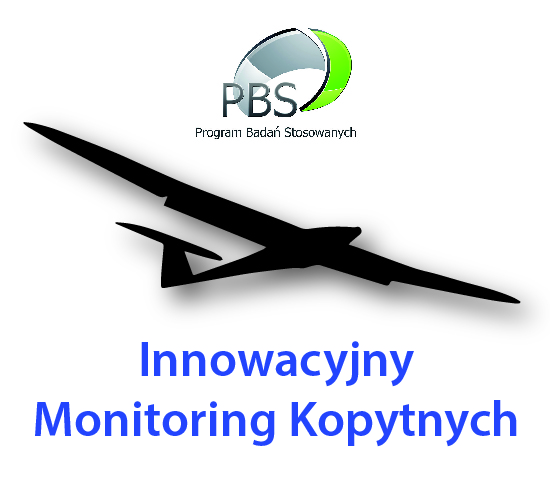Dmowski K. 1999. Birds as bioindicators of heavy metal pollution: review and examples concerning European species. Acta Ornithol. 34: 1-25. | | Department of Ecology, Warsaw University, Krakowskie Przedmieście 26/28 00-927 Warsaw, POLAND, e-mail: Ten adres pocztowy jest chroniony przed spamowaniem. Aby go zobaczyć, konieczne jest włączenie w przeglądarce obsługi JavaScript. Abstract. The following species of sedentary birds with widespread and common occurrence are the most convenient as bioindicators: Magpie Pica pica, Feral Pigeon Columba livia f. domestica, House Sparrow Passer domesticus or Tree Sparrow Passer montanus, Blackbird Turdus merula, Goshawk Accipiter gentilis (feathers) and nestlings of various species. The non-destructive method of feather analysis is suitable mainly for assessment of Pb, Cd, As, Sb, Ge, Tl, Se, and Hg. It cannot be applied for Mn, Ni, Sr, Rb, Mo and Fe that are cumulated in feathers at similar levels in polluted and unpolluted areas. Hg, Zn, Cu, Cr, As and Se have stronger affinity to keratin than others. The method requires strict standardisation, particularly in the way samples are to be collected and prepared for mineralisation. None of feather cleaning procedures removes all contaminants from vane surfaces. With respect to many elements, analysing "concentration in feathers" is a measurement of external deposition therefore metal levels found in feathers correspond more strongly to the data on immission than to the element pool available in food. Mercury is an exception here. In cases of toxic elements as Pb, Cd or Tl it is possible to predict their concentrations in internal tissues on the basis of feather analysis. Key words: birds, bioindication, biomonitoring, heavy metals, biomarkers | |
Kosiński Z. 1999. Effects of lake morphometry, emergent vegetation and shore habitat on breeding birds communities. Acta Ornithol. 34: 27-35. | | Institute of Environmental Biology, Department of Avian Biology and Ecology, Adam Mickiewicz University, Fredry 10, 61-701 Poznań, POLAND; e-mail: Ten adres pocztowy jest chroniony przed spamowaniem. Aby go zobaczyć, konieczne jest włączenie w przeglądarce obsługi JavaScript. Abstract. The aim of this study was to investigate the role of lake morphometry, emergent vegetation and the surrounding habitat on breeding bird communities. The analysis was based on the published data covering breeding bird communities of 18 lakes in Western Poland. Seven habitat variables were used in the analysis: lake area, length of shore line, maximum depth, area of rushes, length of shoreline covered by emergent vegetation, length of shoreline covered by forest and presence of islands. A stepwise multiple regression analysis revealed that most of the variation in the total bird species richness was explained by the length of shoreline covered by emergent vegetation. The number of water bird species was predicted by the lake area, since the number of reed and bush birds was dependent on the area of rushes. The most important factors determining the total number of pairs were the lake area and the area of rushes. The number of pairs of water birds was dependent on the lake area and the maximum depth. The density of water birds was negatively correlated with the area of rushes and positively with the lake area. The number of pairs of water birds was statistically higher on lakes with islands than on those without. The abundance of reed and bush birds correlated positively with the area of rushes, hence the density was dependent on the maximum depth and the area of rushes. There was no effect of shoreline covered by forest on the abundance of studied groups of birds. Key words: water birds, reed and bush birds, lake morphometry, island, lake, shore habitat | |
Nowakowski J. K., Malecka A. 1999. Test of Busse's method of studying directional preferences of migrating small Passeriformes. Acta Ornithol. 34: 38-44. | | Dept. of Zoology, Agricultural and Teacher's University, Prusa 12, 08-110 Siedlce, POLAND Abstract. The test was carried out in the Central Poland, during the autumn migration in years 1997 and 1998, and the object was the Robin Erithacus rubecula. The aim of the study was the verification of the new field method for studying directional preferences in small Passerine migrants, proposed by Busse (1995). In total, 843 Robins were tested in "Busse's cage". Directions preferred by the tested birds were distributed in conformance with wintering areas and migration routes of the species known from literature. Robins with dark legs and grey plumage at flanks pointed at the directions according to the axis Scandinavia - the Balkans, which is in consistence with the literature data. Robins tested at daytime show stronger directionality than those tested at night. Birds tested with the sun visible expressed stronger directionality than those tested under overcast. The Robins tested at day more often pointed at the return direction - to the north and to the north-east. The activity of birds in the experimental cage increased at daytime with the lack of sun visible, and with overcast, and was higher in birds with smaller fat deposit, thus it reflected mainly the normal vital activity not associated with the migration. Key words: study methods, orientation of birds, passerines Passeriformes | |
Riga F., Capizzi D. 1999. Dietary habits of the Long-eared Owl Asio otus in the Italian peninsula. Acta Ornithol. 34: 45-51. | | Instituto Nazionale per la Fauna Selvatica, Via Ca' Fornacetta 9, I-40064, Ozzano Emilia (Bologna), ITALY Abstract. Feeding habits of the Long-eared Owl in the Italian peninsula were investigated by using mainly data from bibliographic sources. A total of 4651 prey items from 13 study localities were used in the analysis. Field voles Microtus sp., which globally accounted for over 51.4% of the cumulative total, were the most important prey, followed by the mice Apodemus sp. (31.5%). Insectivores (6.0%) and birds (4.7%) were preyed less frequently. In order to represent the diet of Long-eared Owls some dietary parameters were computed, such as percentages of occurrence of the most important prey taxa (insectivores, murids, arvicolids, and birds), mean prey size, taxonomic diversity and prey size diversity. The linear relationships between the variables were assessed by using either Spearman-rank and Pearson correlation coefficients. Taxonomic dietary diversity was positively correlated with site latitude. Geographic linear distances (in km) of the various study sites and relative niche overlap values were negatively correlated. The dietary diversity was positively correlated with the proportion of murids and negatively with arvicolids. It suggests that the Long-eared Owl is quite specialised in feeding upon arvicolids when the availability of this prey is high. Furthermore, one-way ANOVA revealed that significant differences in mean prey size between the different localities were present. Performing a Principal Component Analysis on the dietary parameters we observed a separation of the study sites in two different groups along the first factor, and the proportions of arvicolids and murids were the most important parameters in order to explain the observed variability. Key words: Long-eared Owl Asio otus, trophic ecology, small mammals | |
Salvati L., Manganaro A., Fattorini S., Piattella E. 1999. Population features of Kestrels Falco tinnunculus in urban, suburban and rural areas in central Italy. Acta Ornithol. 34: 53-58. | | 1 Piazza F. Morosini 12, I-00136 Roma, ITALY. e-mail: Ten adres pocztowy jest chroniony przed spamowaniem. Aby go zobaczyć, konieczne jest włączenie w przeglądarce obsługi JavaScript. 2 Via di Donna Olimpia 152, I-00152 Roma, ITALY 3 Department of Animal and Human Biology, University of Rome "La Sapienza", Viale dell'Universita 32, I-00185 Roma, ITALY Abstract. Breeding Kestrels Falco tinnunculus were studied in Rome with the aim to test the Gehlbach's model. Density was very high in the city-centre (1.9 pairs/km2) and relatively high in the suburbs (0.6 pairs/km2). Nest spacing was low in the city-centre, and close-nesting pairs were recorded. Breeding success was consistent with that of other European urban areas. Availability of nest-sites, especially holes in ruins, and abundance of prey, especially birds and bats, can partially explain the high breeding density observed in the city-centre. Significant differences among study areas were found in density, spacing, use and reoccupation of nest-sites, confirming the Gehlbach's model. The number of fledglings per pair, number of successful pairs and fledging date did not significantly differ among study-areas, in contrast with the Gehlbach's model. Key words: kestrel, Falco tinnunculus, population density, breeding performance, diet, Mediterranean area, urban habitat | |
Tryjanowski P., Hromada M., Antczak M. 1999. Breeding habitat selection in the Great Grey Shrike Lanius excubitor - the importance of meadows and spring crops. Acta Ornithol. 34: 59-63. | | 1 Department of Avian Biology & Ecology, Adam Mickiewicz University, Fredry 10, PL-61-701 Poznań, POLAND, e-mail: Ten adres pocztowy jest chroniony przed spamowaniem. Aby go zobaczyć, konieczne jest włączenie w przeglądarce obsługi JavaScript. 2 Department of Natural History, Sarisske Museum, Radnicne nam. 13, SK-085 01 Bardejov, SLOVAKIA, e-mail: Ten adres pocztowy jest chroniony przed spamowaniem. Aby go zobaczyć, konieczne jest włączenie w przeglądarce obsługi JavaScript. 3 Student Ornithological Section, Adam Mickiewicz University, Fredry 10, PL-61-701 Poznań, POLAND Abstract. Habitat composition of breeding territories, habitat use during foraging, and nest-site selection of the Great Grey Shrike Lanius excubitor were examined in western Poland during years 1998-1999. Meadows and spring crops occurred within territories more frequently than expected by their availability. Habitat utilisation during foraging was significantly non-random and shrikes appeared to prefer low vegetation. All of 27 nests were located along tree lines and edges of small woodlots (maximum 7 m), and neither deciduous nor coniferous trees were preferred (78% and 22%, respectively). Preferred habitats of Great Grey Shrikes are relatively uncommon in modern agricultural landscape. Lack of suitable habitats in intensively used farmland may be the most important reasons for shrike population decline over Europe. Wielkopolska region offers good breeding habitats and this species has more dense and stable population over here, than in other parts of Europe. Key words: Great Grey Shrike Lanius excubitor, agriculture, breeding biology, conservation, foraging, nest-site
| |
Zawadzka D. 1999. Feeding habits of the Black Kite Milvus migrans, Red Kite Milvus milvus, White-tailed Eagle Haliaeetus albicilla and Lesser Spotted Eagle Aquila pomarina in Wigry National Park (NE Poland). Acta Ornithol. 34: 65-75. | | 25 Czerwca 68 b/15, 26-600 Radom, POLAND Abstract. The study was conducted in the years 1989-1993. The Black Kite fed primarily on birds and fish. Red Kite - on birds, mammals and carrion, the White-tailed Eagle - almost exclusively on birds and fish, and the Lesser Spotted Eagle on small mammals, birds and frogs. The White-tailed Eagle was the most specialised species. Its food niche breadth was smallest among the studied species and food taken in water habitats accounted for 95% of its diet. The Black Kite had the widest food spectrum in terms of the frequency of prey while the Red Kite - in terms of the biomass consumed. The mean body mass of prey specimens taken by the White-tailed Eagle was 578 g, by the Red Kite - 235 g, the Black Kite - 230 g, and the Lesser Spotted Eagle - 34 g. The food niches of both Kites and the White-tailed Eagle strongly overlapped. The smallest overlap was between the food niches of the two Eagles and between the Lesser Spotted Eagle and the Black Kite. Key words: Diet composition, food niche, birds of prey, Wigry National Park | |
SHORT NOTES Jabłoński P. G., Lee S. D. 1999. Winter avifauna of three botanical gardens in the suburbs of Seoul (Korea). Acta Ornithol. 34: 77-80. | | 1 Institute of Ecology, Polish Academy of Sciences, Łomianki 05-092, POLAND, e-mail: Ten adres pocztowy jest chroniony przed spamowaniem. Aby go zobaczyć, konieczne jest włączenie w przeglądarce obsługi JavaScript. 2 Korea Environment Institute, 1049-1 Sadang-Dong, Dongjak-Gu, Seoul 156-090, SOUTH KOREA, e-mail: Ten adres pocztowy jest chroniony przed spamowaniem. Aby go zobaczyć, konieczne jest włączenie w przeglądarce obsługi JavaScript. Abstract. The avifauna of three botanical gardens near Seoul was studied. Total number of species in the gardens (16-20) is within range observed in Europe. Total densities of birds observed (66-160 ind./10 ha) were in lower range of the densities in urban parks and wooded areas in Europe. This is the first such report for temperate Asia. Key words: birds, gardens, Korea, synantropization, urban habitat
| |
Lee S. D., Jabłoński P. G. 1999. Species composition of mixed-species flocks of wintering tits in forests near Seoul (Korea). Acta Ornithol. 34: 81-84. | | 1 Korea Environment Institute, 1049-1 Sadang-Dong, Dongjak-Gu, Seoul 156-090, SOUTH KOREA; e-mail: Ten adres pocztowy jest chroniony przed spamowaniem. Aby go zobaczyć, konieczne jest włączenie w przeglądarce obsługi JavaScript. 2 Institute of Ecology, Polish Academy of Sciences, Łomianki 05-092, POLAND; e-mail: Ten adres pocztowy jest chroniony przed spamowaniem. Aby go zobaczyć, konieczne jest włączenie w przeglądarce obsługi JavaScript. Abstract: This is the first quantitative report of the composition of mixed flocks of wintering birds in the temperate forests of Asia. There were nine species observed in the 37 mixed flocks: Parus varius, Parus major, Parus palustris, Parus ater, Aegithalos caudatus, Regulus regulus, Sitta europaea, Dendrocopos kizuki, Dendrocopos major. For each species the proportion and the average number of individuals are presented in four forest types: fir, pine, oak and mixed forest consisting mainly of oak and pine. P. major was seen in a higher proportion of flocks in coniferous (pine and fir forests combined) than in deciduous (mixed and oak combined) forests. P. ater used coniferous trees more often than P. major and more often than P. palustris. Key words: mixed flocks, Paridae, wintering tits, suburban forests, Seoul, Korea
| |
Zieliński P., Wojciechowski Z. 1999. Feeding frequency in the Barn Swallow Hirundo rustica in relation to time of the day. Acta Ornithol. 34: 85-88. | | Department of Ecology and Vertebrate Zoology, University of Łódź, Banacha 12/16, 90-237 Łódź, POLAND, Ten adres pocztowy jest chroniony przed spamowaniem. Aby go zobaczyć, konieczne jest włączenie w przeglądarce obsługi JavaScript., Ten adres pocztowy jest chroniony przed spamowaniem. Aby go zobaczyć, konieczne jest włączenie w przeglądarce obsługi JavaScript. Abstract. The study was carried out in central Poland (52°15'N, 19°25'E) by all-day visual observation of five nests of Barn Swallows feeding their nestlings. Feeding frequency of older (age of 14-20 days) nestlings changed significantly with time of the day and was highest (46 visits/h) before noon, declining in the afternoon (21 visits/h) and after a slight increase during the early evening (25 visits/h) declining again in late evening. Feeding frequency of younger (age of 6 days) nestlings did not showed significant changes in the day cycle (average 20 visits/h). The proportion of midday feedings increased with nestling age while the proportion of evening feedings. Key words: Barn Swallow Hirundo rustica, breeding ecology, behaviour, nestling, feeding | |
|
 Unia Europejska
Unia Europejska







